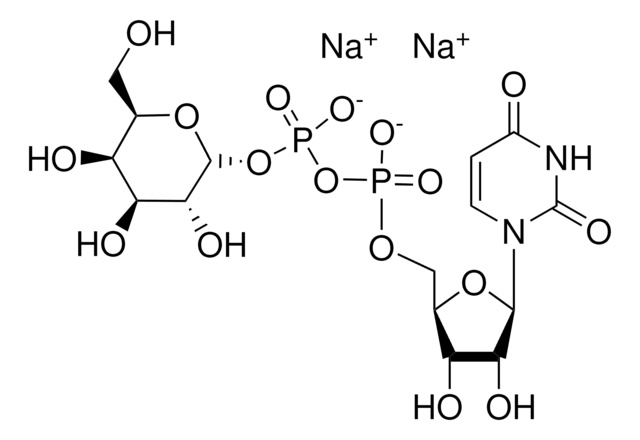V4888
Anti-VSV-G antibody produced in rabbit
affinity isolated antibody, buffered aqueous solution
Synonym(s):
Anti-Vesicular Stomatitis Virus glycoprotein
About This Item
Recommended Products
biological source
rabbit
Quality Level
conjugate
unconjugated
antibody form
affinity isolated antibody
antibody product type
primary antibodies
clone
polyclonal
form
buffered aqueous solution
species reactivity
mammals
concentration
~1.0 mg/mL
technique(s)
immunoprecipitation (IP): 0.5 μg using VSV-G tagged fusion proteins from transfected mammalian cell lysates (tagged fusion proteins from transfected mammalian cell lysates)
indirect immunofluorescence: 1.0 μg/mL using VSV-G tagged fusion proteins in methanol/acetone fixed transiently transfected cells
western blot: 0.1-0.2 μg/mL using VSV-G tagged fusion proteins from transfected mammalian cell lysates
shipped in
dry ice
storage temp.
−20°C
General description
Immunogen
Application
immunocytochemistry.
Chromatin immunoprecipitation (1 paper)
Western Blotting (1 paper)
Western blotting following immunoprecipitation (1 paper)
Biochem/physiol Actions
Physical form
Not finding the right product?
Try our Product Selector Tool.
Storage Class Code
10 - Combustible liquids
WGK
WGK 3
Flash Point(F)
Not applicable
Flash Point(C)
Not applicable
Certificates of Analysis (COA)
Search for Certificates of Analysis (COA) by entering the products Lot/Batch Number. Lot and Batch Numbers can be found on a product’s label following the words ‘Lot’ or ‘Batch’.
Already Own This Product?
Find documentation for the products that you have recently purchased in the Document Library.
Our team of scientists has experience in all areas of research including Life Science, Material Science, Chemical Synthesis, Chromatography, Analytical and many others.
Contact Technical Service